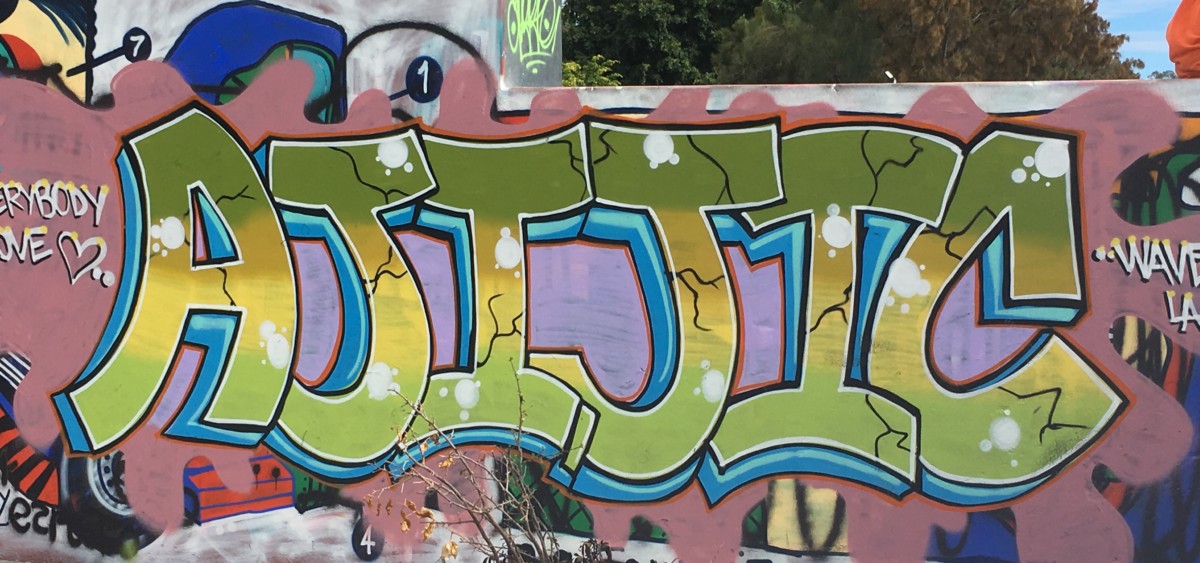Episode 2 of Journey to Oaxaca
Tlacolula. Musical name. We stopped there for gas on our way to the “frozen waterfalls” of Hierve Del Agua. This busy little village was bustling with traffic, my favorite being the “mototaxis”. Like colorful toys whizzing around the streets, pick up, drop off. 3 wheels. So practical. When can I ride in one??? But first…
Hierve el Agua is an amazing rock formation that creates the illusion of a waterfall, when in fact it is a process of spring water trickling through fissures in the cliffs, leaving behind its over saturation of calcium and other minerals. Two artificial pools have been created to corral the water close to the smaller of the two waterfalls, making it a delightful, and some say, healing, swimming experience. The turquoise/green water is quite cool and the bottom not visible, though not very deep. https://en.wikipedia.org/wiki/Hierve_el_Agua

Delightful! And spectacular. Never mind that we drove miles into the mountains on good highways then onto a narrow, bumpy dirt road past two small villages to get there. It was all fascinating to me. After a brief swim and photo ops, crowds filed in as we left to order up some mango and coconut water at one of the many vendor stalls. Smart entrepreneurs – they know how thirsty you’ll be after your swim in the bright sun. Off we went to the next stop on this journey…mezcal!
The dirt road through two small villages eventually came to a couple of basket sellers and mezcal distilleries. No holding us back. Norma pulled off to the right toward a primitive shed with big oak barrels and a horse tied to a grinding mill for crushing the “piñas”, or hearts, of the particular agave plant. Beside the shed was a stone-lined pit for roasting the piñas and a stack of charred wood. A sample of the roasted piñas rendered a taste not unlike your grandmother’s Thanksgiving sweet potato casserole, though the fibrous treat must be discarded after chewing. A copper “still” is heated by a fire to distill the fermented liquid. Oh, it’s much more involved than that, but you get the picture. https://www.tripsavvy.com/how-mezcal-is-made-1588808. This is not your average distillery. No rules and regs here. You take your chances. These guys were great fun and we laughed our way through the process. Three or four shots later Ben learned how to say “thank you” with Mexican hand signals and we walked away with two bottles of pretty darn good mezcal and a story to tell!

And we’re off to Mitla, former religious capital of the Zapotec civilization. https://en.wikipedia.org/wiki/Mitla Though the first picture below may not make much sense, I include it because as the marching band moved past our car (while we waited to pull out), we realized it was a funeral procession. People carrying flowers and candles – and the coffin – suddenly flooded the streets and surrounded our car. For a few moments we couldn’t move. It seemed disrespectful to me to take any more pictures, so we watched as the solemn crowd passed by, probably headed to the church.

Santa María del Tule. The “stoutest” tree trunk in the world resides in the church gardens of this little town. Arbol del Tule. The Montezuma cypress is reportedly more than 2000 years old and has a girth of nearly 138′. The “baby” tree nearby is probably 1000 years old. The little town thrives from tourism centered around the amazing trees, though the now heavily trafficked streets are proving somewhat detrimental. https://en.wikipedia.org/wiki/%C3%81rbol_del_Tule
Tlacolula. Sunday market extraordinaire. The streets are closed off to traffic and hoards of pedestrians file in. Tourists and locals from surrounding villages crowd in to visit with friends and to experience the food, colors, and crafts of the area. This is the first market where I’ve seen live turkeys and chickens for sale. At one point I saw a woman holding a baby on her hip with one hand and carrying an inverted (live) turkey in the other. There were tables bearing nothing but mole ingredients. Tables of household goods. Tortillas. Food para llever – food to go. And drinks like the pre-Hispanic tejate, the frothy liquid in the bowl below. You’ll learn more about this in my next episode where I talk about watching the dough, yes, dough, being made. https://www.entornoturistico.com/tejate-la-bebida-mas-popular-de-oaxaca/ Aprons (mandiles) are standard fair in the villages of Oaxaca. During the Spanish Conquest each village was assigned a particular “costume” and a particular craft or household item to produce. The idea behind the “costume” was to make each population more identifiable. This is how the beautiful weaving and embroidery that we associate with Mexico today came into being. Fewer and fewer villagers wear their assigned garb now on a daily basis, saving them instead for celebrations and festivities. On this day aprons and beribboned hair abounded.
Seven months ago back in NC we let go of objects with a vengeance and purpose. But we also knew we were entering a world of indigenous crafts like no other. Rugs, baskets, embroidery, fabrics, pottery, candles, alebrijes, carvings, and on and on. Mecca. We kept it small on this trip, trying not to overdo, but I can tell you that every time you buy directly from an artisan in Mexico you are giving them, in trade, a better life. This was not our last trip to the fascinating Oaxaca Valley. Hasta luego!

Thanks again to Norma Schafer for the marvelous tour of these villages. And thanks to her and Ben Dyer for some of the above photos.









































This makes me feel like I’m almost with you. The pictures are fabulous. I even read Bill the mezcal story. What an adventure!
Thanks so much!
Another wonderful blog, Chris! Charming and informative! And always beautiful photos.